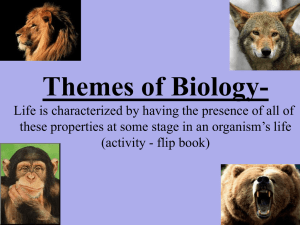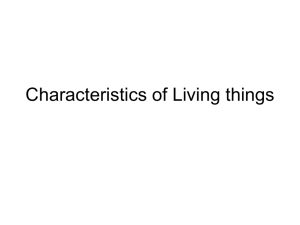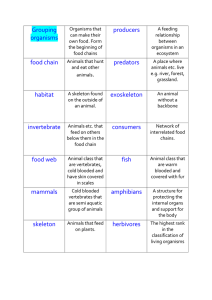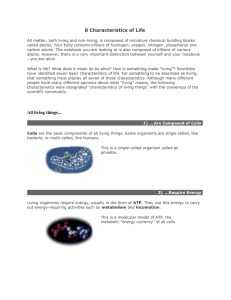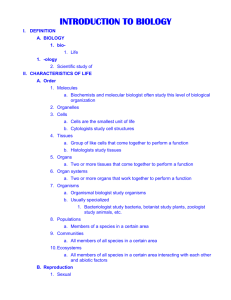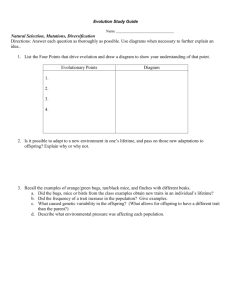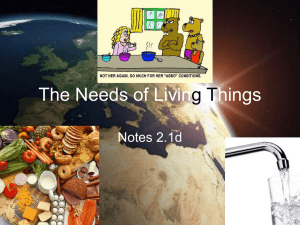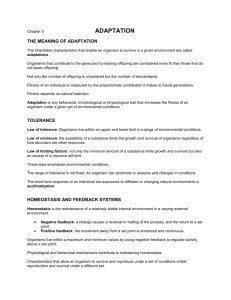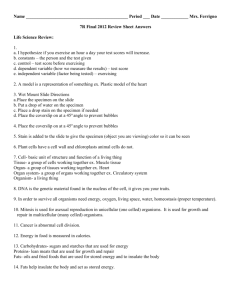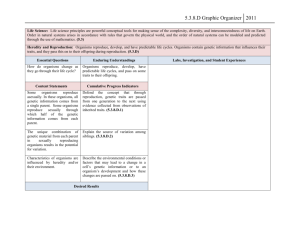Notes
advertisement
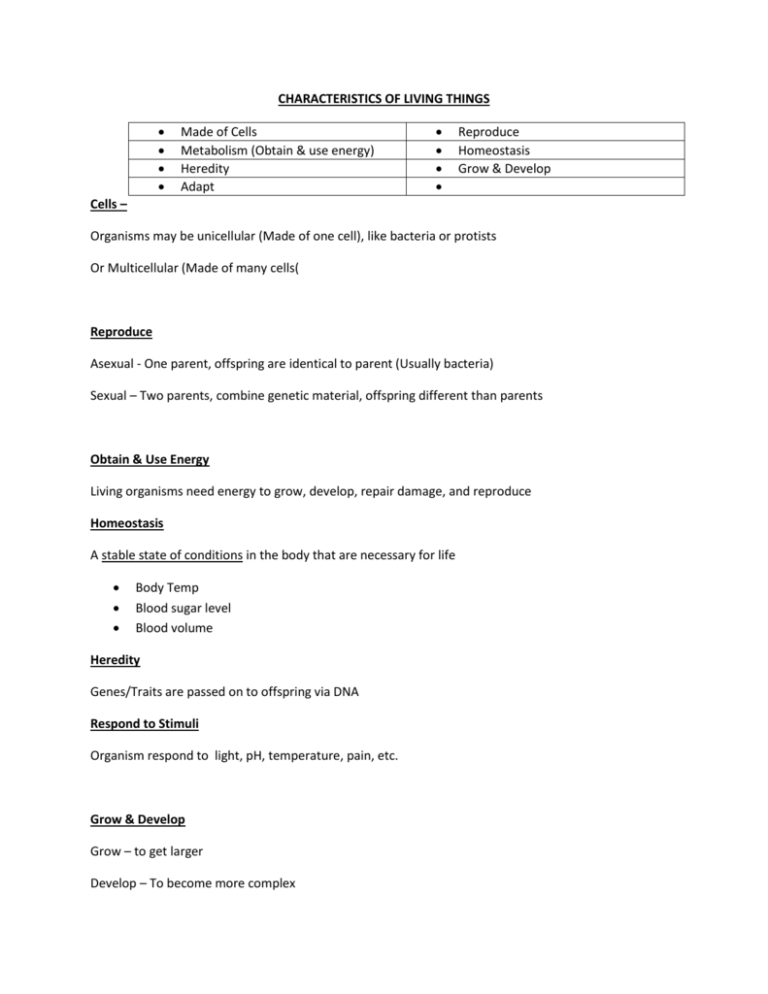
CHARACTERISTICS OF LIVING THINGS Made of Cells Metabolism (Obtain & use energy) Heredity Adapt Reproduce Homeostasis Grow & Develop Cells – Organisms may be unicellular (Made of one cell), like bacteria or protists Or Multicellular (Made of many cells( Reproduce Asexual - One parent, offspring are identical to parent (Usually bacteria) Sexual – Two parents, combine genetic material, offspring different than parents Obtain & Use Energy Living organisms need energy to grow, develop, repair damage, and reproduce Homeostasis A stable state of conditions in the body that are necessary for life Body Temp Blood sugar level Blood volume Heredity Genes/Traits are passed on to offspring via DNA Respond to Stimuli Organism respond to light, pH, temperature, pain, etc. Grow & Develop Grow – to get larger Develop – To become more complex Adapt A process that enables organisms to become better suited to their environment Species obtain adaptations through evolution over great periods of time Mnemonic Certain random messy houses have really good apples. What do Living Things Need? Energy Needed to carry out life processes, like reproducing and growing Derived from food Some organisms make their own food (Producers) Some organisms eat their food (Consumers) Location of many chemical reactions in living things Most animals need oxygen Most plants need Carbon dioxide Some bacteria use sulfur dioxide Water Gases Temperature Organisms that are warm blooded must live in habitats within certain temperature range, and their bodies maintain a constant temperature Organisms that are cold blooded must be able to change their temperature to match their surroundings Living Space Need a minimum amount of space to meet the needs above
